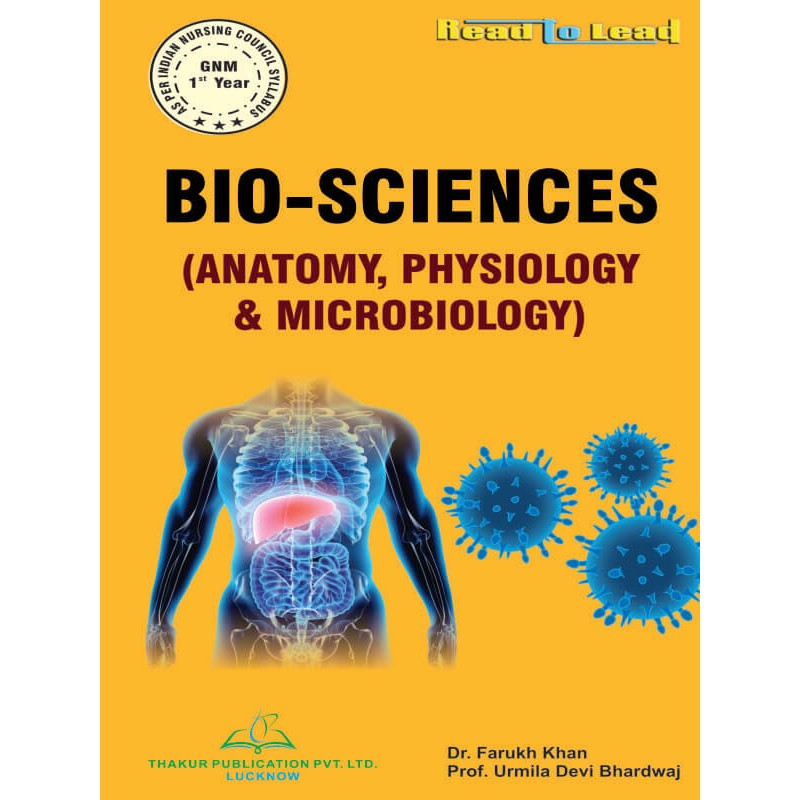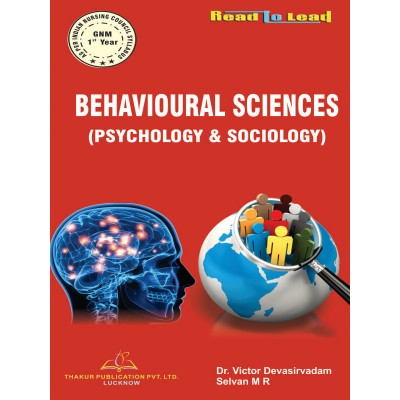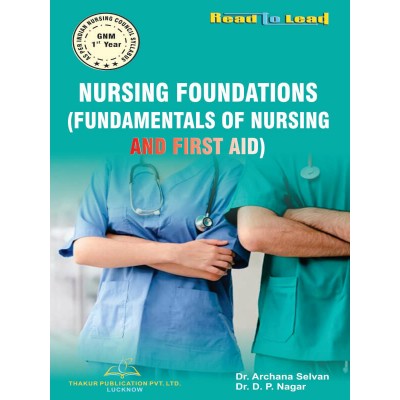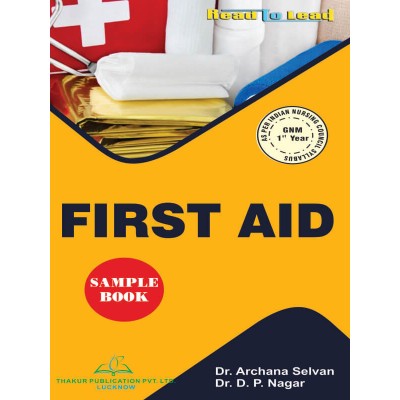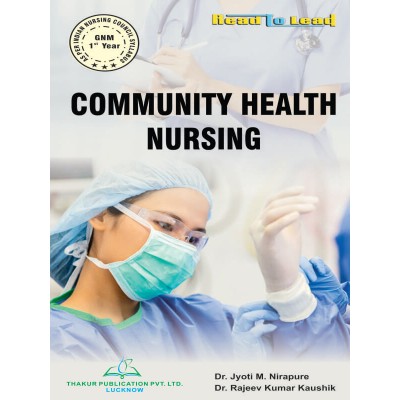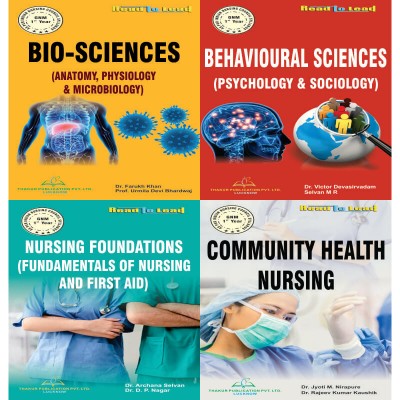Bio-Sciences ( Anatomy, Physiology & Microbiology)
Tax excluded
Click below to Buy E-Book Edition:
Thakur Publication’s introducing ‘Anatomy and Physiology’ GNM 1st year book as per INC syllabus. GNM 1st year anatomy book covered all Syllabus. This book is available in English.
The Anatomy and Physiology book for GNM 1st year is a comprehensive guide to understanding the structure and functions of the human body. Written in English, this book provides in-depth knowledge of various systems, including the skeletal, muscular, nervous, cardiovascular, respiratory, digestive, and reproductive systems.
FAST & ALL INDIA DELIVERY · USER-FRIENDLY LAYOUT
It covers essential concepts and explores the interconnections between different body systems. With clear explanations and detailed illustrations, this book serves as an indispensable resource for students pursuing a career in nursing and healthcare.
ISBN- 978-93-90460-18-2
AUTHORS: DR. Farukh Khan , Prof. Urmila Devi Bhardwaj
Bio-Sciences (Anatomy, Physiology & Microbiology)
Syllabus
1.1 BIO-SCIENCES
1.1. (1) ANATOMY AND PHYSIOLOGY
|
Unit. No. |
Learning |
Objectives Content |
Hr. |
|
I |
Define and spell various anatomical terms. |
Introduction to anatomical terms and organization of the human body a) Anatomical terms b) Systems and cavities of the human body |
4 |
|
II |
Describe different organs of the body, systemic function and their interrelationship |
Introduction to the detailed structure of the body a) The cell: Structure, reproduction and function b) Tissues including membranes and glands : types structure and functions c) Body cavities and their contents |
6 |
|
III |
Describe the composition of blood and its functions. |
Blood a) Composition and formation of blood b) Functions of blood c) Blood clotting, blood grouping and cross matching d) d) Blood products and their use. |
6 |
|
IV |
Describe the structure and functions of heart and blood vessels |
The Circulatory System a) Heart : Structure, functions including conduction system and cardiac cycle b) Blood vessels : Types, Structure and position c) Circulation of blood d) Blood pressure and pulse |
6 |
|
V |
Describe structure and functions of lymphatic system |
The Lymphatic System a) Structure and function of lymph vessels, Lymph nodes and lymph circulation, lymphatic tissue - spleen and thymus |
6 |
|
VI |
Describe the structure and functions of respiratory system |
The Respiratory System a) The structure and functions of respiratory organs b) The physiology of respiration c) Characteristics of normal respiration and deviation |
6 |
|
VII |
Describe the structure and function of digestive system |
The Digestive System a) Structure and functions of the alimentary tract and is accessory organs. b) b) The process of digestion, absorption and metabolism of food constituents. |
6 |
|
VIII |
Describe the structure and functions of organs of Excretory system. |
The Excretory System a) Structure and functions of the kidney, ureters, urinary bladder, and the urethra b) Formation and composition of urine. c) Fluid and electrolyte balance d) Structure and functions of the skin. e) e) Regulation of the body temperature. |
6 |
|
IX |
Describe the structure and functions of endocrine glands. |
The Endocrine System The structure and functions of the pituitary, thyroid, parathyroid and adrenal glands, pancreas (islets of Langerhans), ovaries and testes |
6 |
|
X |
Describe the structure and functions of male and female reproductive system and accessory organs |
The Reproductive System a) Structure and functions of the female reproductive system- Process of menstrual cycle, b) reproduction and menopause c) Structure and functions of breasts d) Structure and functions of the male reproductive system e) Reproductive health |
8 |
|
XI |
Describe the structure and functions of Nervous system. |
The nervous System a) Types of nerves- structure and functions b) Brain and cranial nerves. c) Spinal cord and motor and sensory pathways of the spinal cord, autonomic nervous system. |
10 |
|
XII |
Describe the structure and function of sensory organs |
The sense Organs a) Skin, ear, eye, nose and tongue b) b) Physiology of vision, hearing, smell, touch, taste and equilibrium. |
6 |
|
XIII |
Describe the structure and functions of skeletal system. |
The Skeleton a) Formation and growth of bones b) Tendons, ligaments and cartilages c) Classification of bones joints d) Joint movement e) Axial and appendicular skeleton |
8 |
|
XIV |
Describe structure and functions of Muscular system. |
The Muscular System a) Type, structure and functions of muscle b) Origin, Insertion, and action of muscles |
6 |
1.1. (2) MICROBIOLOGY
|
Unit. No. |
Learning |
Objectives Content |
Hr. |
|
I |
Describe evolution of microbiology and its relevance in nursing. |
Introduction a) History of bacteriology and micro-biology. b) Scope of microbiology in Nursing |
3 |
|
II |
Classify the different types of micro organism Describe the normal flora and the common diseases caused by pathogens Explain the methods to study microbes |
Micro Organisms a) Classification, characteristics, (Structure, size, method and rate of reproduction) b) Normal flora of the body. c) Pathogenesis & common diseases. d) Methods for study of microbes, culture & isolation of microbes. |
8 |
|
III |
Describe the sources of infection and growth of microbes Explain the transmission of infection and the principles in collecting specimens |
Infection and its transmission a) Sources and types of infection, nosocomial infection. b) Factors affecting growth of microbes. c) Cycle of transmission of infection portals of entry, exit, modes of transfer. d) Reaction of body to infection, mechanism of resistance. e) Collection of specimens. |
4 |
|
IV |
Describe various types of immunity, hypersensitivity autoimmunity and immunizing agents |
Immunity a) Types of immunity – innate and acquired. b) Immunization schedule. Immunoprophylaxis (vaccines, sera etc.) c) Hypersensitivity and autoimmunity. d) Principles and uses of serological tests |
5 |
|
V |
Describe the various methods of control and destruction of microbes |
Control and destruction of Microbes a) Principles and methods ofmicrobial control -Sterilization -Disinfection -Chemotherapy and antibiotics -Pasteurization b) Medical and surgical asepsis c) Bio-safety and waste management |
5 |
|
VI |
Demonstrate skill in handling & care of microscopes Identify common microbes under the microscope |
Practical Microbiology a) Microscope – Parts, uses, handling and care of microscope b) Observation of staining procedure, preparation and examination of slides and smears c) Identification of common microbes under the microscope for morphology of different microbes. |
5 |
